Written by: Anum Zaeem
Posted on: June 02, 2025 |  | 中文
| 中文
Derawar Fort, Bahawalpur (Photo by Fazal Khaliq)
Ever stumbled upon something so magnificent in the middle of nowhere that it stops you in your tracks? That's the magic of Derawar Fort, 40 massive bastions punching 30 meters skyward from Pakistan's Cholistan Desert, looking like a giant's forgotten sandcastle frozen in time.
Here's what makes this place truly mind-blowing: you're not just looking at a medieval fortress, you're standing on the ghostly remains of a lost civilization. Long before these walls rose from the sand, the Cholistan Desert told a completely different story. This seemingly barren landscape was once lush and vibrant, cradling an advanced Indus Valley civilization along the life-giving banks of the mighty Hakra River.
"Walking through the desert today, it's almost impossible to imagine water flowing here," says archaeologist Dr. Amina Khan. "But beneath these sands lie the secrets of a people who once thrived where we now struggle to even find shade."
Around 600 BC, something dramatic happened that would forever alter the course of human history in this region. The Hakra River, the lifeblood of this ancient society, mysteriously changed course and quite literally disappeared into the ground. Imagine waking up one day to find your primary water source simply... gone.
"It was essentially an ecological catastrophe," explains environmental historian Tariq Ahmed. "Within a generation or two, what had been fertile farmland transformed into the arid desert we see today. An entire way of life vanished along with that river."
As the waters retreated, so did the people. The once-thriving agricultural communities abandoned their homes, leaving behind remnants of their existence that archaeologists still uncover today: pottery shards, ancient tools, and foundation stones telling the story of a lost world.
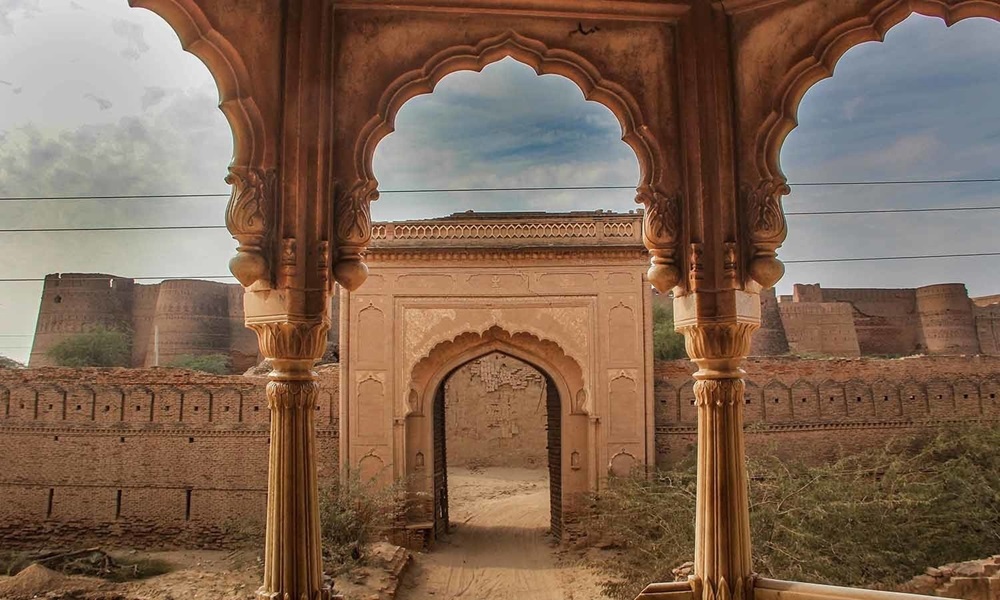
Elegant scalloped arches frame a view of the fort, showcasing the exquisite Islamic architectural influences.
Time and the relentless desert have reclaimed most of these structures, reducing them to barely visible ruins or foundations buried beneath shifting sands. Among all these crumbling remains, Derawar stands alone as the last great survivor of a network of desert fortresses.
"It's like finding the last standing column of a forgotten temple," marvels history enthusiast Zara Malik. "When you realize Derawar is just one of what used to be many similar structures, it makes you wonder about all the stories lost to time."
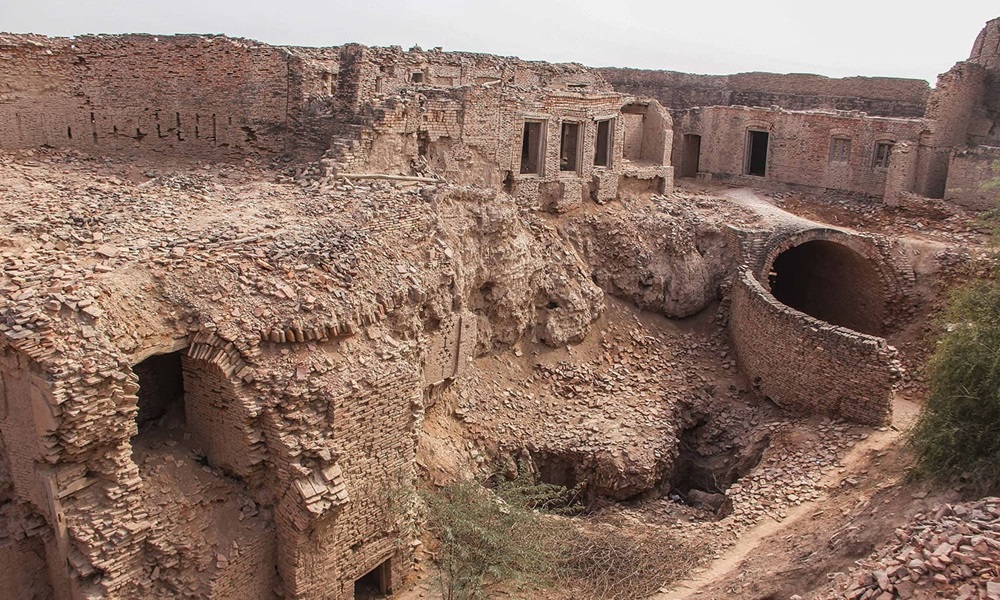
Crumbling interior structures expose ancient construction techniques and the ongoing battle against time.
"I remember driving for what felt like hours through nothing but sand," recalls photographer Jamal Akhtar. "Then suddenly, there it was, this enormous structure that seemed to have no business existing in such emptiness. My camera couldn't capture the scale or the feeling of seeing it appear on the horizon."

Weathered walls tell the story of centuries battling desert elements while preserving architectural details.
While the region's history stretches back thousands of years to those ancient Indus Valley dwellers, Derawar's own story begins in the 9th century. A Hindu ruler named Rai Jajja Bhatti established a mud fort here to claim this strategic position. Even the name tells a story: "Dera" meaning settlement and "Rawar" referencing the founder.
Fast forward to the 1700s, and the political landscape had dramatically shifted. Muslim Nawabs controlled the region, and Sadeq Mohammad Khan I, founder of Bahawalpur State, captured this vital outpost. Ambitious and determined to display his power, he transformed the original structure into the stone colossus we see today.
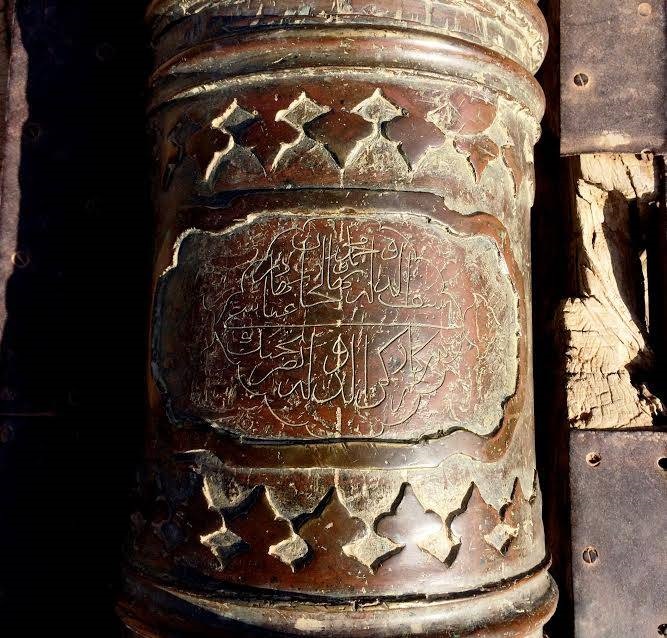
Intricate Islamic calligraphy etched into the fort's cannons reveals the artistic sophistication of the Nawabs who once ruled the region.
Step through the enormous wooden gates today, and the temperature immediately drops as thick walls block the desert heat. Your footsteps echo where once royal guards patrolled and nobles plotted their next conquests.
Inside lies a world within walls, royal quarters where Nawabs once lounged on silken cushions, storerooms that held provisions for withstanding lengthy blockades, and spaces where merchants from distant lands might have negotiated trades.
The most remarkable spot? An ancient mosque built by the Abbasi rulers, its intricate geometric patterns and delicate calligraphy somehow surviving centuries of punishing weather. Nearby, the royal necropolis houses ornate tombs of the Nawab dynasty, their final resting place in the shadow of their greatest achievement.
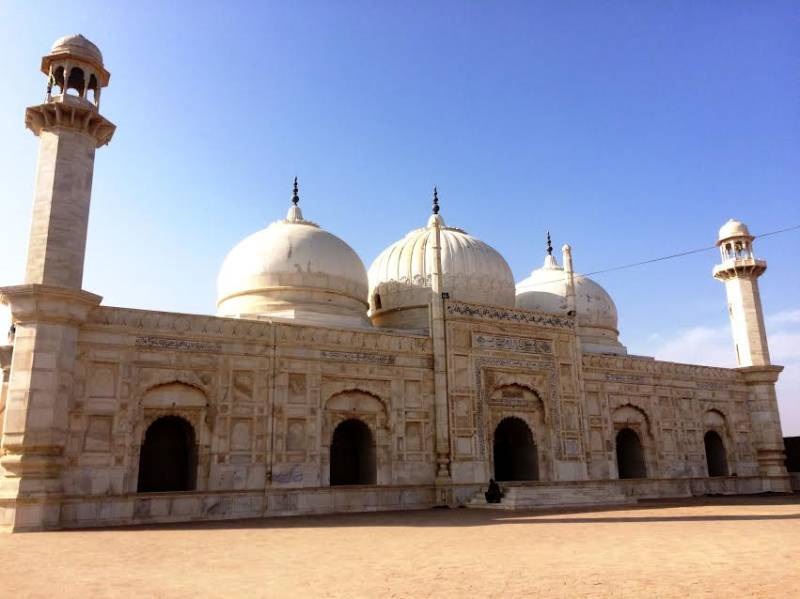
The magnificent Abbasi Mosque stands pristine against desert skies, its white domes a stark contrast to the fort's earthen tones. (
The layers of history here create an unmatched experience. In a single day, you're connecting with both the ancient Indus Valley people who once farmed these lands when rivers flowed freely, and the medieval rulers who later built mighty fortresses after the landscape transformed.
"It's like standing at the crossroads of multiple civilizations," explains cultural guide Hassan Ali. "Below your feet lie the ghosts of ancient farmers who harvested crops along a river that no longer exists. Around you stand the walls built by desert kings who adapted to this harsh new reality. Few places on earth let you feel such different eras simultaneously."
Despite the river's disappearance and the harsh conditions, humans never completely abandoned this land. The Cholistan (locally called Rohi) remains home to semi-nomadic communities whose ancestors found ways to survive after the ecological catastrophe.
If you're fortunate, you might encounter camel caravans crossing the dunes or colorful camps where families gather as evening approaches. These communities, with their distinctive music, vibrant embroidery, and ancient survival knowledge, represent an unbroken human connection to this challenging landscape.
"My family has moved with our herds through Cholistan for countless generations," shares local guide Rashid. "The fort has always been our landmark. Every child grows up hearing stories about hidden chambers and secret passages beneath it. These walls are written into our identity."

A historic cannon stands guard at Derawar Fort's entrance, a silent reminder of the fortress's military significance through the centuries.
Want to feel Derawar's full enchantment? Time your visit carefully. Winter months transform the experience with comfortable temperatures and skies so clear they seem to magnify the fort's presence against brilliant blue.
For a truly magical moment, arrive at dawn when first light paints the bastions in gold and pink hues. Or stay for sunset, when the massive structure casts long shadows across the sands, and ancient stones glow amber against the darkening sky.
"There's a moment just as the sun touches the horizon," whispers photographer Saima Khan, "when the light hits the walls at such an angle that you can almost see the fingerprints of history embedded in the stones. It's like the fort is telling its story, if only we know how to listen."
Yet hope glimmers on the horizon like a desert sunrise. As more travelers discover this hidden gem, awareness grows about its unique historical value spanning thousands of years. Local conservation groups now lead restoration initiatives, and the fort has been proposed for UNESCO World Heritage status.
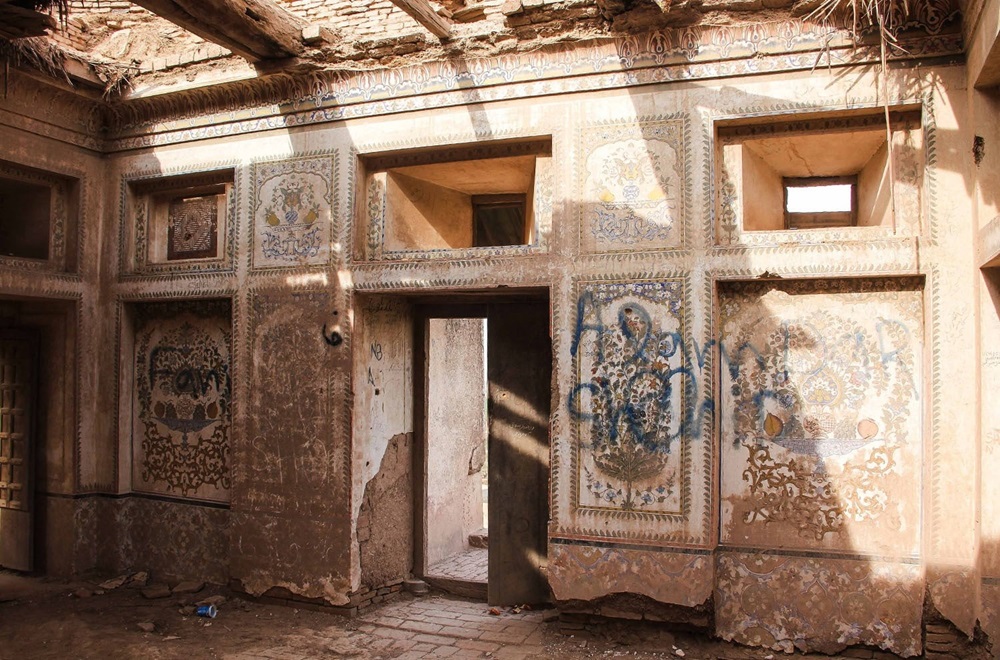
Faded frescoes and ornate wall paintings reveal the artistic sophistication that once adorned interior chambers.
"From the ancient Indus people who once farmed here to the fort builders who later claimed the desert, Derawar connects us to countless generations who faced environmental challenges and created beauty despite them."
As you leave, casting one final glance over your shoulder at those imposing walls against the endless sky, you'll understand why Derawar captures imaginations so completely. In a world of manufactured experiences, this desert sentinel offers something increasingly rare: an authentic connection with multiple layers of human history, still powerful, still proud, still whispering its ancient secrets to those who make the journey.
Will you be the next to hear them?
You may also like: